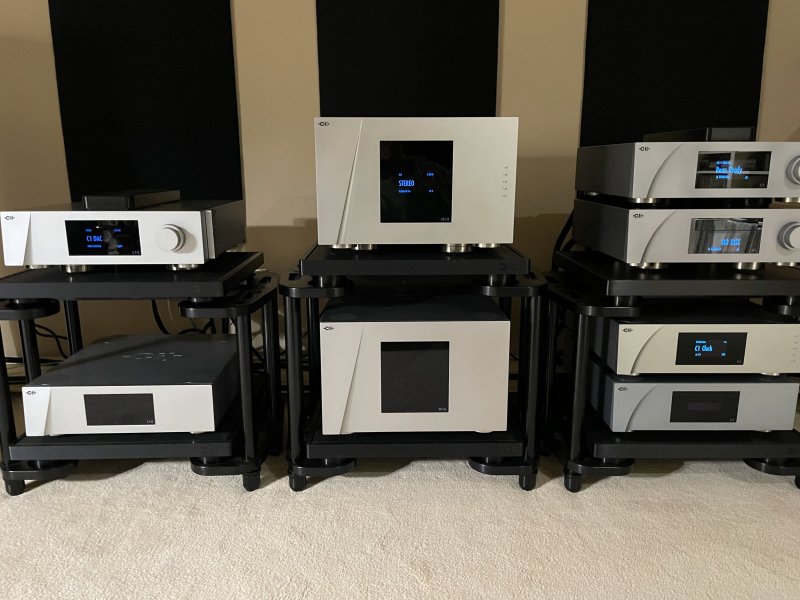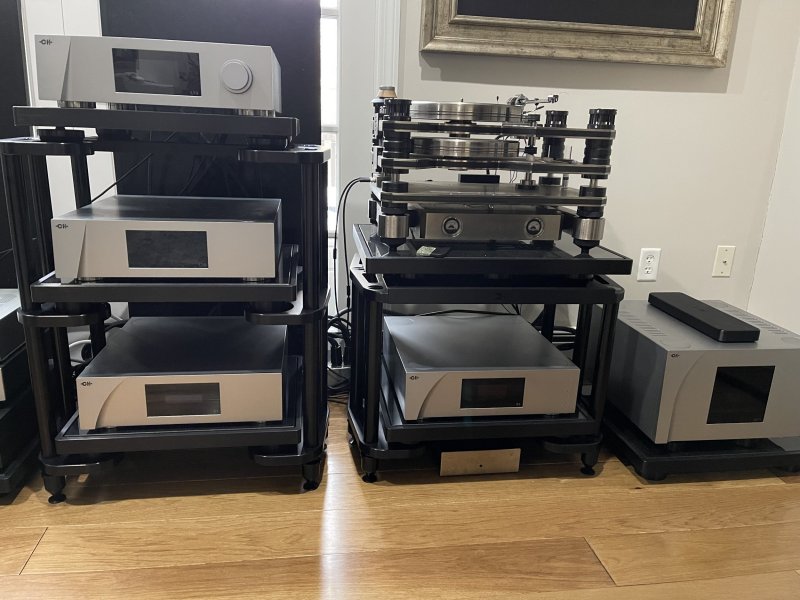Would appreciate input.
Have home demo of C1/L1/M1.1 pending.
Am considering HRS SXR rack.
Using 12 inch struts will allow enough vertical height for the M1.1 but am wondering if it’ll be too difficult to actually wrangle the M1.1 into the rack.
Using a separate amp platform isn‘t a viable option: all the components would need to be racked (am thinking about a 3-level double wide rack, with the right hand side for server, power supply etc etc).
Anyone have experience with this situation?
Have home demo of C1/L1/M1.1 pending.
Am considering HRS SXR rack.
Using 12 inch struts will allow enough vertical height for the M1.1 but am wondering if it’ll be too difficult to actually wrangle the M1.1 into the rack.
Using a separate amp platform isn‘t a viable option: all the components would need to be racked (am thinking about a 3-level double wide rack, with the right hand side for server, power supply etc etc).
Anyone have experience with this situation?
Last edited:



